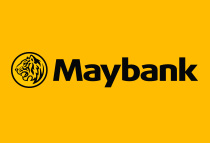Management of exposure to both interest rate and currency risks through selected risk management tools.
We offer a team of experienced staff that will assist you in the management of exposure to both interest rate and currency risks by providing the following risk management tools:
How does this work?
2 types of option contracts, Calls and Puts.
A Call option contract gives the holder the right, but not the obligation, to buy a commodity at a mutually agreed price (strike price) on or before a certain date (the expiration date).
A Put option gives the holder the right, but not the obligation, to sell at the strike price, on or before the expiration date.
The options are classified as either American or European Options.
An American option may be exercised at any time before the expiration date, while a European option can only be exercised on the expiration date. The buyer of the options has to pay a price referred to as the Premium to the seller.
Benefits
- Hedges against foreign exchange rate risk arising from import or export of goods, and from foreign investments or funding in any currency
- Protects against unfavourable movement in foreign exchange rates while allowing you to benefit in total from favourable movements
What are the services available?
Interest Rate Swap
An Interest Rate Swap (IRS) transaction is a contract between two parties to exchange interest rate payments (cash flows) at a future date. It allows the flexibility to convert a fixed rate asset/liability to a floating rate asset/liability and vice versa.
There are 2 types of swaps which are traded daily by most markets - interest rate swaps (IRS) and currency swaps.
Benefits
- Covers against upward and downward movement of interest rates
- No premium payment up front
- Markets are liquid in all major currencies
- Notional amount, tenor and dates are all negotiable
- No principal changes hands, therefore it minimises credit exposure
Currency Swap
A currency swap is made up of an interest rate swap where payment flows are expressed in different currencies and determined by the interest rate of those currencies.
It can be structured as follows:
- Fixed to Fixed
- Floating to Floating
- Fixed to Floating or Floating to Fixed
There is an exchange of principal at the beginning and upon swap maturity, at the same exchange rate which is, usually, the spot rate at the inception of the transaction.
Benefits
- Hedges a long-term foreign exchange risk
- Reduces the cost of funding a foreign subsidiary or foreign investment
- Helps you achieve a lower domestic cost of funds by arbitraging the inefficiencies between foreign exchange and capital markets
Forward Rate Agreement
A Forward Rate Agreement (FRA) is a contractual agreement between two parties to fix the rate of interest for a future period on a specified notional principal, such as a loan or deposit.
An FRA is used to hedge an asset or liability. It is also a widely used instrument for investment, trading and arbitraging.
Benefits
- No principal changes hands
- Principal sums are not at risk
- Risks of settlement failure are kept to a minimum
- No margin is required
- Can be tailored to meet the needs of an institution in hedging assets or liabilities
Standardisation of Swap Documents
Financial derivatives transactions generally involve a contract between two parties to fulfill a mutually agreed obligation in the future. Therefore, all contracts need to be legally documented to avoid disagreement or default in the future. The widely accepted market standard is the International Swap & Derivatives Association, Inc. (ISDA)
 Maybank Corporate
Maybank Corporate Maybank Islamic
Maybank Islamic  Investment Banking
Investment Banking Business Banking
Business Banking SME Banking
SME Banking Asset Management
Asset Management Private Wealth
Private Wealth Premier Wealth
Premier Wealth ASPIRE
ASPIRE
 Customer Service
Customer Service